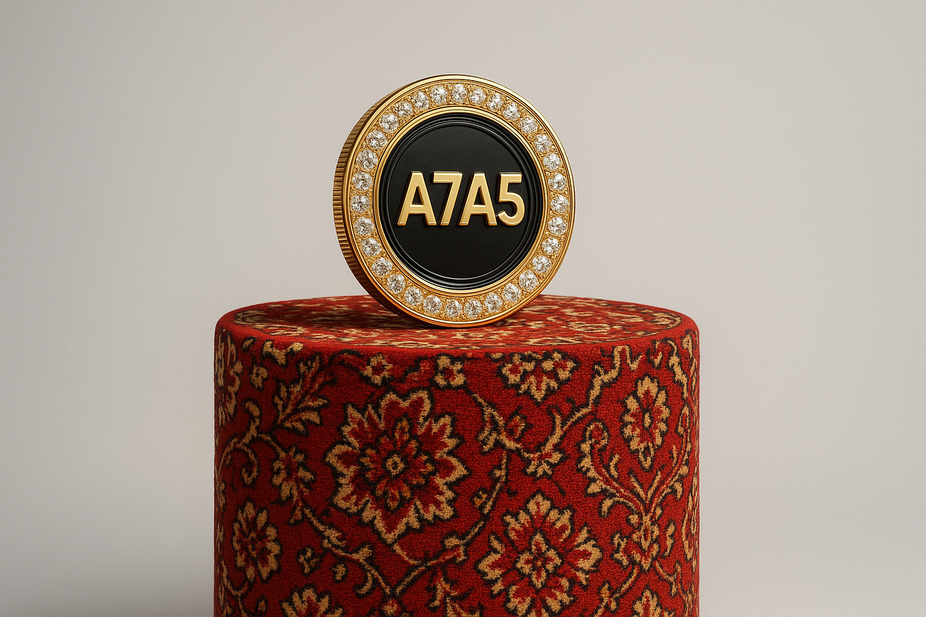Decred
Download Ironwallet app and get tool for making transaction without network fee
About Decred
Decred emerges as a noteworthy derivative of Bitcoin’s foundational code, enhanced by a distinctive governance model. This innovation diverges from the norm in the cryptocurrency realm by empowering all stakeholders to participate actively in the blockchain’s evolution.
Conceived initially as an offshoot of Bitcoin, Decred has matured into an independent entity with a standout characteristic: its governance is democratically anchored within its community. It welcomes proposals from all users, over which its stakeholders exercise their voting rights.
Furthermore, Decred distinguishes itself through a novel dual consensus mechanism that combines proof of work (PoW) and proof of stake (PoS). This approach aims to foster a stronger, more inclusive consensus. Under this system, PoW participants are rewarded with Decred’s currency, DCR, for their role in transaction processing and block generation. Holders of DCR can then engage in the PoS process, staking their coins to partake in blockchain validation and earn a share of the block rewards, thus ensuring a balanced and participatory ecosystem.
History of Decred
The narrative of Decred is a fascinating chapter in the evolution of digital currency, echoing a journey of innovation and community-driven development. This saga begins in the corridors of the BitcoinTalk forums in 2013, a crucible for many pioneering ideas in the cryptocurrency space. It was here that Decred was initially conceived under the moniker Memcoin2 by visionary individuals known as tacotime and _ingsoc. The conceptual groundwork laid by someone assuming the alias Adam Mackenzie through white papers was revolutionary, proposing a system where users could directly influence the blockchain’s direction and integrating a hybrid proof of work/proof of stake consensus mechanism. This blueprint for a more inclusive and democratic digital currency quickly captured the imagination of the crypto community.
Fast forward to a year later, and the project, nurtured under the aegis of Company 0, began to take a more definitive shape. The identities behind the Decred initiative, including the enigmatic tacotime—who would later contribute to the creation of Monero while preserving their anonymity—remain shrouded in mystery, adding to the project’s intrigue. Officially unveiled in early 2016, Decred stood as a testament to the collective effort of its founding team under Company 0’s stewardship.
As Decred has matured, it has embraced change and innovation, reflective of its commitment to user participation and feedback. The platform has seen a slew of inventive features come to life. In 2017, it pioneered the adoption of atomic swaps, allowing for seamless token exchanges across different blockchains without the need for intermediary exchange platforms—a groundbreaking achievement that paved the way for greater interoperability in the crypto ecosystem. The year 2019 marked the introduction of smart contracts and off-chain transactions, enhancing the network’s functionality and scalability. Further solidifying its position as a facilitator of direct trading, 2020 saw the launch of the Decred DCRDEX, a decentralized exchange that expands the trading horizons for its community.
Through these milestones, Decred has continually demonstrated its dedication to pushing the boundaries of what is possible in cryptocurrency, guided by a philosophy of open participation and continuous improvement.
Features of Decred
There are several innovations that make Decred stand out from other cryptocurrency projects:
- Hybrid PoW/PoS consensus – Decred uses a unique hybrid consensus model that combines proof-of-work mining with proof-of-stake voting by DCR holders. This allows both miners and regular users to participate in the block validation process.
- Self-funding treasury – Decred has an autonomous treasury system funded through block rewards that allows developers to be paid for their contributions. This eliminates reliance on external funding sources.
- On-chain governance – Major protocol changes for Decred are voted on by the stakeholders through the Decred voting system. This gives the community more control over the project’s direction.
- Lightning Network support – Decred has implemented support for Lightning Network payments, enabling fast, cheap transactions that enhance its capabilities as a payment network.
How Is Decred Different From Bitcoin?
In the realm of cryptocurrency, Decred presents itself as a fascinating case study when juxtaposed with Bitcoin, the progenitor of digital currencies. At their core, both share a foundational DNA—Decred originated as a fork of Bitcoin, inheriting its hash function for token creation, and both cap their token supply at 21 million, reflecting a shared vision for scarcity and value preservation. This common ground extends to their levels of privacy, security, and the technical intricacies that underpin their operations, suggesting a baseline of similarity in their cryptographic architecture.
Yet, it’s in their governance and consensus mechanisms where the paths of Decred and Bitcoin diverge significantly, revealing the innovative spirit that guides Decred. Unlike Bitcoin, which is steered by a relatively compact group of developers, Decred embraces a broader democratic ethos, inviting its entire community to participate in the decision-making process. This not only enhances its decentralization but also embeds a layer of resilience and inclusivity into its operational model. Decred’s adoption of a hybrid proof of work/proof of stake consensus further underscores its departure from Bitcoin’s pure proof of work framework, offering a more sustainable and scalable approach. This dual system not only diversifies the means by which users can earn block rewards but also contributes to a more balanced network economy.
Beyond these philosophical and structural differences, Decred and Bitcoin also exhibit distinctions in their operational tempo and market dynamics. Decred’s blockchain operates with a quicker block time, allowing for faster transaction processing, though its market penetration and mining activity lag behind that of Bitcoin’s more established presence. Financially, Decred’s tokens are markedly less expensive than Bitcoin’s, a reflection not just of market popularity but of perceived utility and adoption rates. As of mid-2022, the price differential was stark, with Bitcoin commanding a price multiple hundreds of times that of Decred’s. This valuation gap, however, comes with a silver lining for Decred: a generally more stable price point that eschews the volatility often associated with Bitcoin, making it a potentially more predictable asset within the cryptocurrency ecosystem.
These contrasts not only highlight the evolving landscape of digital currencies but also underscore the importance of community-driven innovation in shaping the future of blockchain technology and its applications.
Decred Consensus Mechanism
Decred employs a consensus mechanism called POW/POS Hybrid Consensus. This combines aspects of both proof-of-work (PoW) and proof-of-stake (PoS) to leverage the strengths of each system.
In Decred’s hybrid system, PoW miners create new blocks as with Bitcoin. But every time a new block is mined, PoS voters are called on to verify the block. The votes of the PoS voters decide whether to accept the PoW block.
This adds an extra verification layer that enhances the security and reliability of the blockchain. It also gives PoS voters more say in governing the protocol. Stakeholders can reject blocks created by bad actors, for example.
What is DCR Token
DCR is the native cryptocurrency of the Decred platform. It is used to pay for transactions on the Decred blockchain as well as participate in the platform’s PoS voting system.
DCR is a scarce digital asset, with only 21 million DCR ever to be created. It implements many of the same characteristics as Bitcoin, such as a fixed supply schedule that halves block rewards over time.
Holders of DCR can time-lock their coins in exchange for “tickets” that give them voting rights in Decred’s governance system. The more DCR you lock, the more voting power you receive.
Decred Community Governance
One of Decred’s most innovative features is its community-driven governance system. Using the PoS voting mechanism, Decred stakeholders can have their say on future changes to the protocol.
This on-chain voting system allows the community to make decisions on issues such as:
- Changing consensus mechanisms
- Altering block size limits
- Directing treasury funds
- Adding new features
For a change to be adopted, it must be approved by 75% of PoS voters. This gives Decred holders real decision-making clout when it comes to the future evolution of the project.
The governance system aims to keep power decentralized and prevent controversial protocol changes from being forced through without community consent.
Staking and Mining DCR Tokens
There are two main ways to earn DCR tokens on the Decred network: staking and mining.
Staking involves locking up DCR in exchange for tickets that allow you to participate in block verification voting. The more tickets you have, the better your chances of being called on to vote and receiving a reward.
Decred uses a PoW mining algorithm called Blake256 that leverages ASIC-resistant memory-hard techniques. Miners compete to solve blocks and are rewarded in DCR for doing so.
Staking DCR is generally seen as a lower risk way to earn rewards, while mining DCR creates more decentralization and security for the network. Both stakers and miners play integral roles in the Decred ecosystem.
Investment Potential and Risks of Decred
Many crypto investors see potential in Decred thanks to its innovative hybrid consensus system, built-in governance, and active development team. As of November 2023, DCR has a market cap of around $700 million, making it a top 50 cryptocurrency.
However, DCR is still a speculative investment given its short history and the inherent volatility of the crypto markets. It trades on various exchanges so investors should be prepared for price swings.
Decred aims to offer a more decentralized and democratic system than Bitcoin. But whether it can challenge more established platforms remains to be seen. As with any crypto investment, thorough research and careful position sizing is advised.
Decred is an ambitious cryptocurrency project with some intriguing technological innovations. For investors willing to take on some risk, it offers an opportunity to gain exposure to a unique approach to decentralized governance and consensus mechanisms. While still evolving, Decred has strong fundamentals that could allow it to emerge as a leading platform in the years ahead.

























